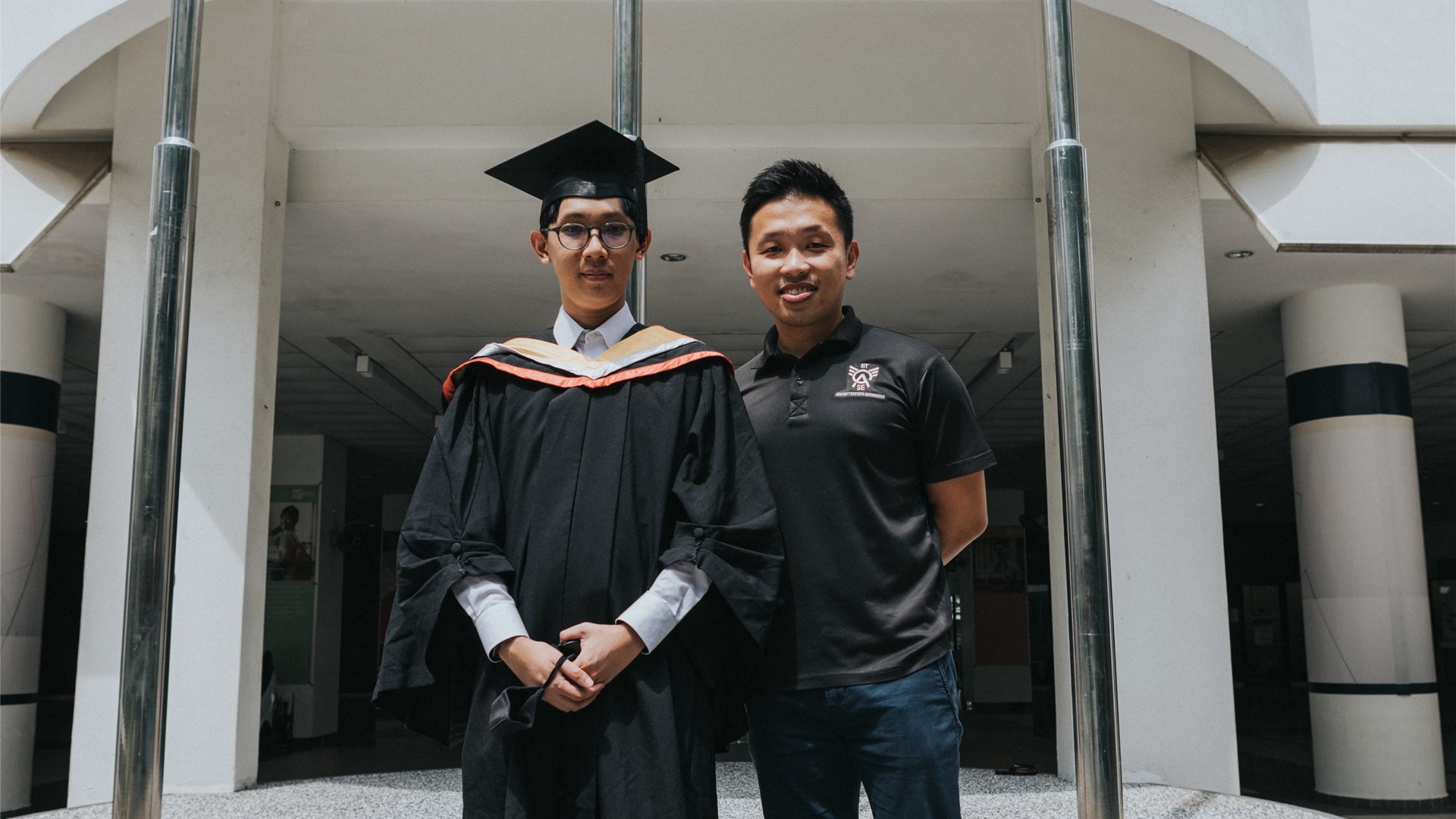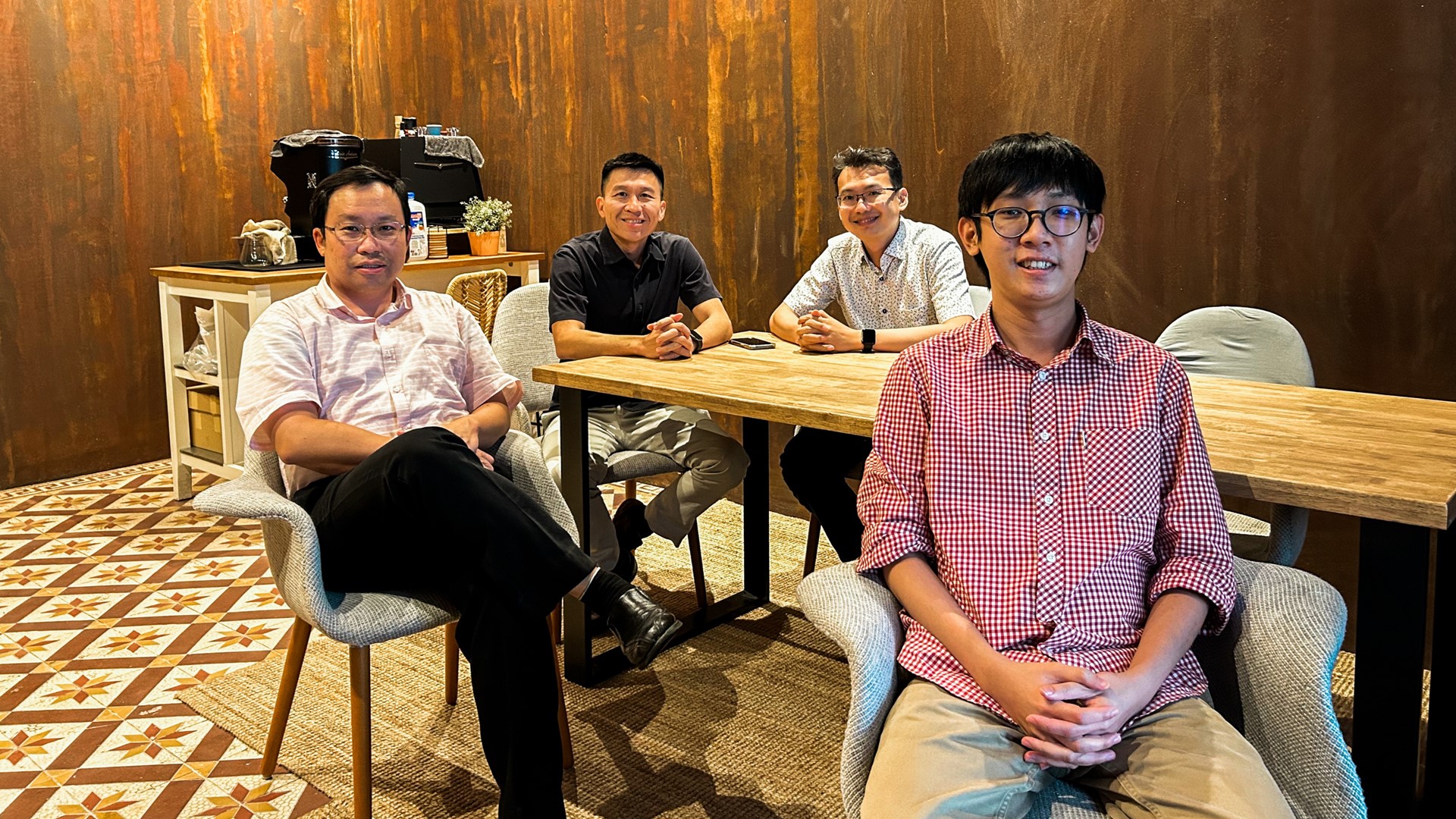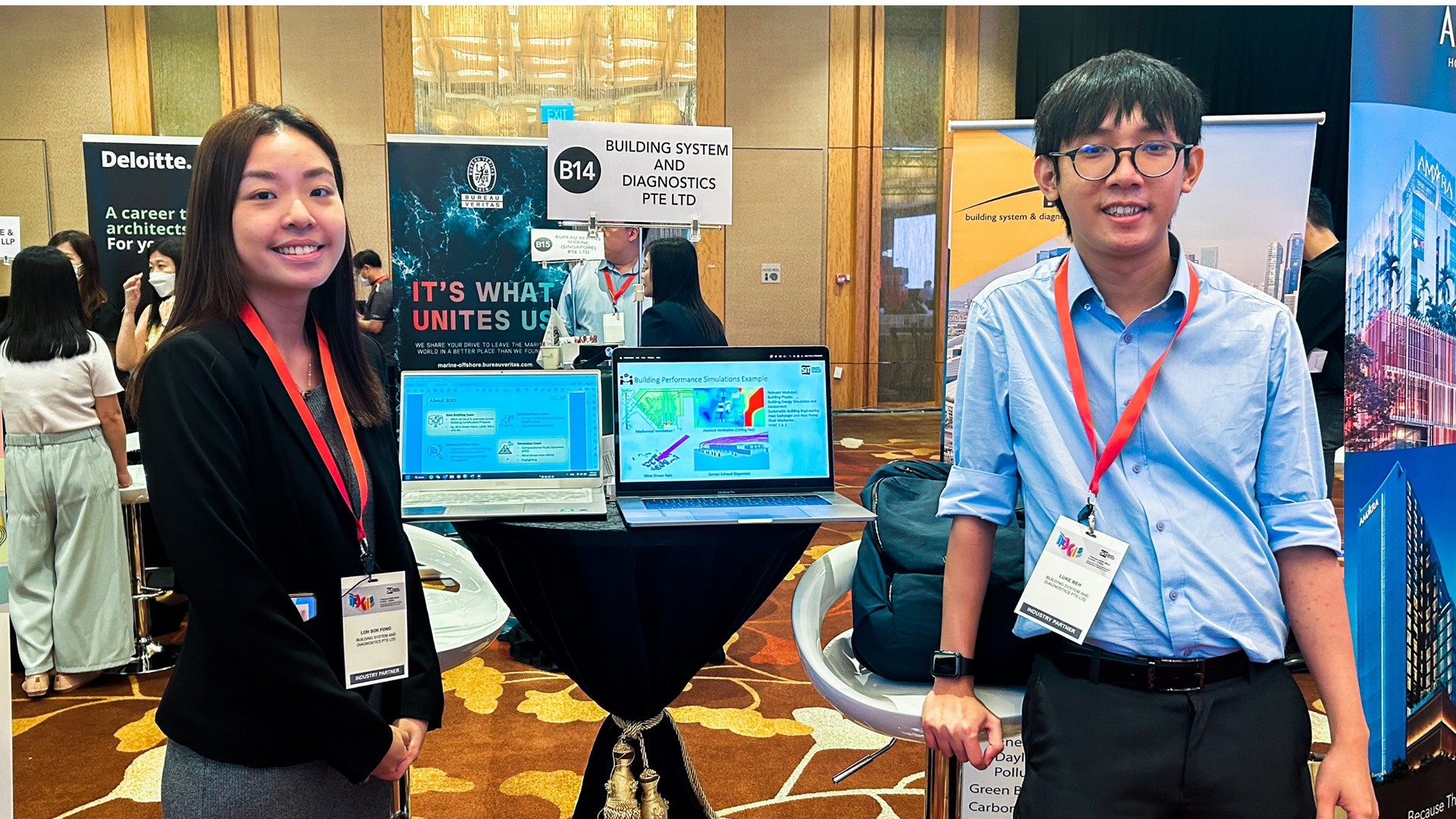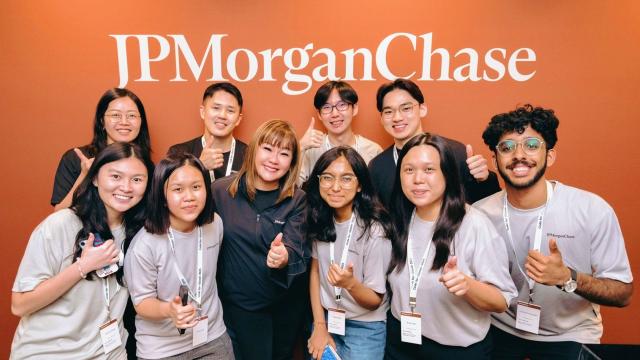Meet Luke Beh, an engineer by day and master’s student by night, who wants to build a new generation of buildings that are greener and better.

Luke Beh (left) and A/Prof Victor Wang, Luke’s master’s programme project supervisor at SIT@Dover. (Photo: Luke Beh)
The building floor plan that flashed on the computer screen was filled with arrows and lines. Luke Beh stared intently at it as he began using a Computational Fluid Dynamics (CFD) simulation tool to study the airflow of the building before its actual construction, and how the building design could be optimised to achieve more natural ventilation.
This is something that Luke, 29, is passionate about. Luke graduated with a Bachelor of Engineering in Sustainable Infrastructure Engineering (Building Services)[1] in 2021, and is currently pursuing his Master of Engineering at the Singapore Institute of Technology (SIT). Improving the natural ventilation of a building would reduce the need for energy-intensive air-conditioning, leading to better sustainability outcomes.
Around the world, the interest in natural ventilation has soared since the COVID-19 pandemic, as science shows that natural ventilation is key to lowering the risk of airborne transmissions. However, Luke’s interest in the field started when he was pursuing a diploma in Green Building and Sustainability in polytechnic.
When applying for university in 2015, Luke mulled over his options: he could study engineering at a local university, pursue an architecture degree overseas, or further his interest in sustainable buildings.
“The course manager at my polytechnic recommended that I enrol in SIT because of the parallels between the degree programme and what I had studied for my diploma,” he said. “People around me also advised me to pick a degree programme I was truly interested in. Ultimately, it was not just about my degree, but my career. I wanted to do something that I enjoyed, and which would also be useful for society.”
Using Simulations to Solve Problems

Luke Beh (right) and his directors at BSD. (Photo: Luke Beh)
Now an executive engineer at Building System and Diagnostics (BSD), an environmental sustainability firm, Luke has found his niche. Looking back, even this opportunity arose with the help of SIT. In the third year of his undergraduate studies, he did his year-long Integrated Work Study Programme (IWSP) at BSD. It was at BSD where he honed his skills in analysing building blueprints and formulating solutions to optimise building design with the help of CFD simulation software.
Even before he completed his work attachment, the company had offered Luke a full-time position, as they were keen for him to return as a junior engineer upon graduation. After he returned to SIT for his final year project, BSD continued to provide him with support and guidance.
His final year project was on Dual Passive Displacement Coil System, a more sustainable method of cooling machinery using chilled water instead of refrigerant. The project required the use of simulation software, and BSD allowed Luke to use the simulation tools on the company’s workstations for his project. The only condition was that Luke could only use the company’s resources after official working hours.
This opportunity provided him with cutting-edge technology to run CFD simulations for his research and get as close to real life as possible. As Luke explored a greener option for air-conditioning in his project, his supervisor at BSD was a pillar of support. “I was no longer with BSD then, but my supervisor was still very willing to teach me. He was available on the phone and would discuss different aspects of my project with me almost every evening after work.”
Luke’s supervisor, Mr Ken Po, Associate Director at BSD, said, “The learning curve of a CFD engineer is steep. Through the year-long IWSP, Luke demonstrated perseverance in mastering the use of complex CFD software, gaining an understanding of aerodynamics on buildings, and delivering good quality work while meeting the specified timeline. His hard work paid off. He was offered a full-time CFD engineer position at the end of the IWSP, before he graduated from SIT. Fast forward a couple of years and, to date, Luke has participated in and completed dozens of CFD projects, spanning different applications such as Natural Ventilation, Mechanical Ventilation, and Wind Driven Rain, as well as different building typologies such as residential, commercial, and institutional. He has become an integral member of Team CFD at BSD.”
Three years on, Luke has settled in well at BSD. Now, he manages projects and clients, proposes energy-efficient solutions for a variety of building projects, and mentors newcomers to the firm. However, his main responsibility remains what he started with – CFD simulations. Coupled with skills he acquired on the job such as architecture site modelling, Luke seeks to optimise the sustainability of both new and existing buildings. “I will look at the architecture design first, then I run simulations, evaluate results and propose recommendations.”
Lifelong Learning

Luke Beh (right) and Sok Fong, his classmate from his SIT degree programme, who later became his colleague at BSD. They represented BSD at SIT Career Nexus 2023, where SIT students and industry partners connected for potential work attachments and job opportunities. (Photo: Luke Beh)
Luke has set his sights on more. He returned to SIT last year to pursue his master’s degree, which combines applied research with academic modules. Students of the master’s programme can continue working full-time in the day. Their research work aims to solve a challenge at their organisation or within their industry.
“I took up the Master of Engineering programme as I wanted to learn and develop skill sets in research and business matters. I hope to become a more well-rounded professional.”
Now in his second year and set to graduate by end-2023, Luke has picked up skills and knowledge in fields such as research integrity, statistics and data analytics. While these skills help with the technical side of his job, Luke has also been able to take up business modules such as change management, which hone his business sense.
For his thesis, Luke is working on a research project which studies mixed-mode ventilation for high-rise buildings, and the different ventilation methods used to cool down a building. For example, instead of using only air-conditioning, ceiling fans can be used to cool down buildings too. “The idea is to introduce another mode of ventilation to reduce the need to make air-conditioning colder, because the colder the air-conditioning, the more energy it uses,” he explained.
Working on this project with Luke are Associate Professors Victor Wang and Steve Jusuf, who supervise his work. A/Prof Jusuf was also his supervisor during his IWSP stint.
“I can clearly see Luke's passion and desire to master his competency in computational modelling and to apply this skill set in the built environment industry. SIT's Master of Engineering programme is a suitable enabler for Luke to achieve his goal to become proficient in computational modelling and have ample opportunities to apply this immediately to the industry,” said A/Prof Victor Wang, Engineering, SIT.
With his skills and knowledge, Luke aims to make waves in sustainable built environment. “I hope to contribute to the next generation of Green Mark development and formulate policies for the good of the industry one day. This is something I would like to achieve in the next five to eight years.”
[1] The Bachelor of Engineering in Sustainable Infrastructure Engineering (Building Services) will be renamed as Bachelor of Engineering with Honours in Sustainable Built Environment (SBE) from Academic Year 2023.















![[FA] SIT One SITizen Alumni Initiative_Web banner_1244px x 688px.jpg](/sites/default/files/2024-12/%5BFA%5D%20%20SIT%20One%20SITizen%20Alumni%20Initiative_Web%20banner_1244px%20x%20688px.jpg)


